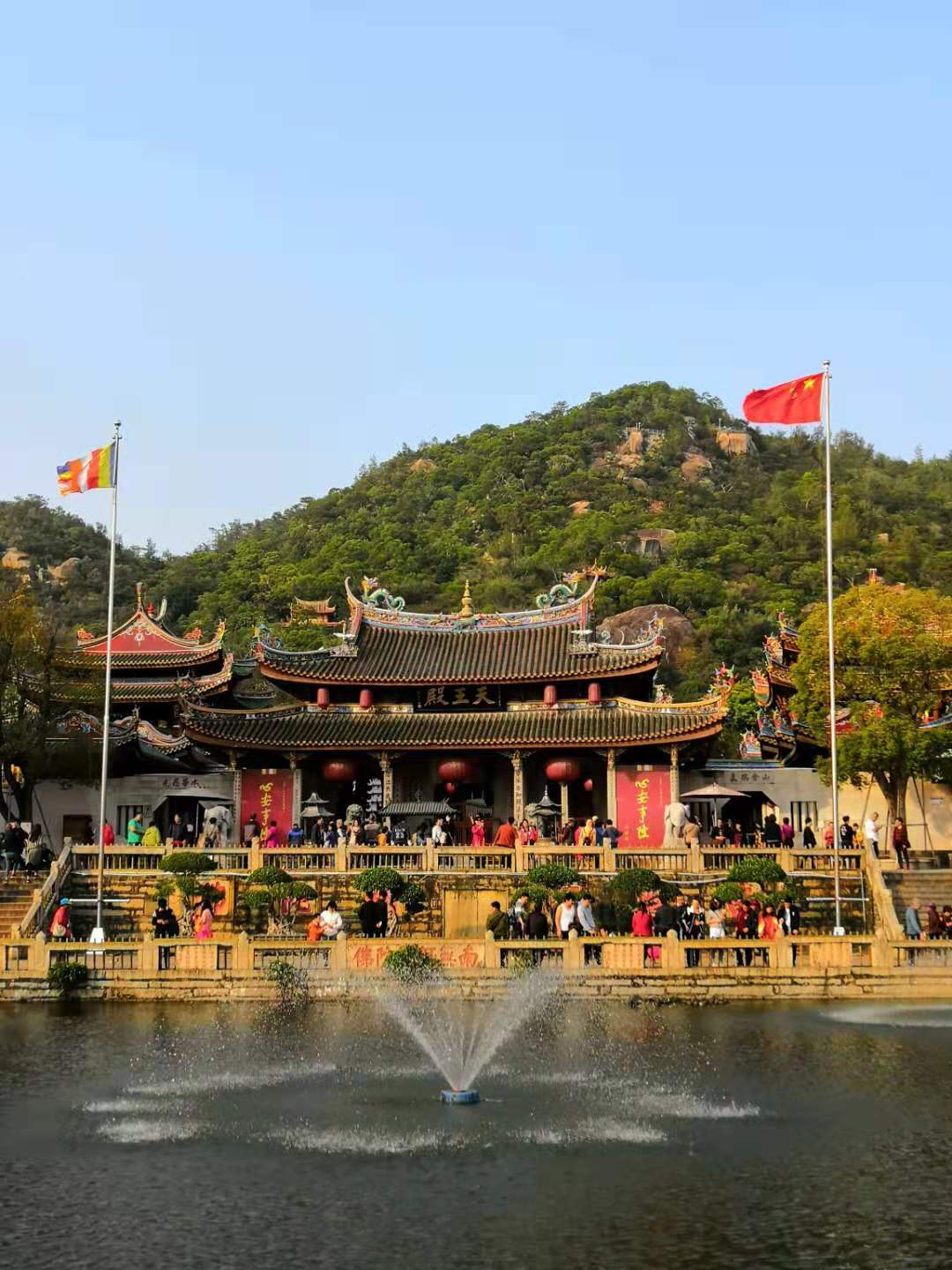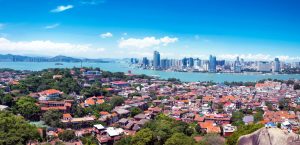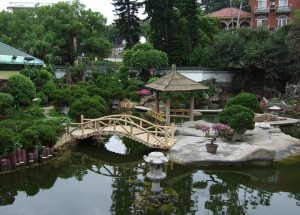 The Hulishan Fortress Scenic Area in Xiamen is a national cultural relics protection unit and a national AAAA-level tourist scenic spot. It was built in the 20th year of Guangxu Emperor in Qing Dynasty, with a total area of over 70,000 square meters and a castle area of 13,000 square meters. It is divided into the war plateau area and the barracks area and the back-mountain area. The structures of the fort include semi-bunker and semi-urban style, combining with European style and architectural charm in the Ming and Qing Dynasties in China. The Hulishan Fort is a product of the Chinese Westernization Movement.
The Hulishan Fortress Scenic Area in Xiamen is a national cultural relics protection unit and a national AAAA-level tourist scenic spot. It was built in the 20th year of Guangxu Emperor in Qing Dynasty, with a total area of over 70,000 square meters and a castle area of 13,000 square meters. It is divided into the war plateau area and the barracks area and the back-mountain area. The structures of the fort include semi-bunker and semi-urban style, combining with European style and architectural charm in the Ming and Qing Dynasties in China. The Hulishan Fort is a product of the Chinese Westernization Movement.
The Krupp cannon, which is also known as the “Cannon King”, is “the ancient 19th-century coastal cannon that is still preserved on the original site in the world” and is listed in the “Giannis World Records of 2000″. On September 3, 1937, the Krupp cannon of the Hulishan Fortress sank the Japanese No.13 ship of ” indocalamus” type, which has firstly opened the brilliant record to sank the Japanese warship in the war zone.
At 8:30 every day (9:30 in the winter), the “welcome ceremony” of the Hulishan Fortress shows the scene that when the Hulishan Fortress was completed, the Fujian Navy Admiral led the crowds to open the gate to welcome the visitors. While accepting visitors to review, it promoted the mighty power of the Fortress.
The Hulishan Fortress has a performance of the Red Army Artillery Clearance at 10:00 and 16:00 o’clock every day. The historical prototype of the Hongyi artillery of the qing dynasty is the honor guard of the red flag and the yellow flag of the eight banners of the qing dynasty. Its content and form use background music, eight-flag clothing, armor, sabre, drums and Qinglong banner to reproduce the process of the Red Yi Artillery’s performance and launch in Qing Dynasty through scene performance.
In short, if you are travelling in Xiamen, you can make a visit to the Hulishan Fortress if you have more time there, as you will learn more about Chinese history in this scenic spot.

 The Water Curtain Cave in the Wuyi Mountains is one of the 72 caves in Wuyi Mountain which is located in the north of Zhangtang Temple. After entering the scenic spot, you will see there is a small waterfall that plunges down from the top of Xiabin Rock. It is called the small Water Curtain Cave. The top of the cave is covered with dangerous rock, and the cave is deep inside the converging rock waist. The entrance to a cave is wide and oblique, and the top of the cave is cool and shaded. The two flying springs pours from the sloping top of the rock, floating in the mountains, which looks like two bead curtains, hanging from the sky to the human world, so it is also known as the Bead Curtain Cave in the Wuyi Mountain.
The Water Curtain Cave in the Wuyi Mountains is one of the 72 caves in Wuyi Mountain which is located in the north of Zhangtang Temple. After entering the scenic spot, you will see there is a small waterfall that plunges down from the top of Xiabin Rock. It is called the small Water Curtain Cave. The top of the cave is covered with dangerous rock, and the cave is deep inside the converging rock waist. The entrance to a cave is wide and oblique, and the top of the cave is cool and shaded. The two flying springs pours from the sloping top of the rock, floating in the mountains, which looks like two bead curtains, hanging from the sky to the human world, so it is also known as the Bead Curtain Cave in the Wuyi Mountain. Huxiaoyan Scenic Area in Wuyi Mountain covers an area of 17 square kilometers. The main scenic spots include One Line Sky, Pavilion Rock, Lingxiao Peak, Shimen Rock and Huxiao Rock. It is one of the best places in Wuyi Mountain that has special springs. The so-called “Huxiao” is an allusion to the immortal who once rode the tiger on the rock. In fact, the sound of “Huxiao” came from a huge hole in the rock. When the mountain wind passed through the hole, it screamed and shook the empty valley and shocked the mountains. Here is also the other explanation for it: There is a huge hole in the Huxiao Rock, and when the mountain wind passes over the hole, the hole will sound like a tiger. When the sound is small, it is not obvious to hear, but when the sound is bright, it can be a shock to the Wuyi mountains, which is creepy.
Huxiaoyan Scenic Area in Wuyi Mountain covers an area of 17 square kilometers. The main scenic spots include One Line Sky, Pavilion Rock, Lingxiao Peak, Shimen Rock and Huxiao Rock. It is one of the best places in Wuyi Mountain that has special springs. The so-called “Huxiao” is an allusion to the immortal who once rode the tiger on the rock. In fact, the sound of “Huxiao” came from a huge hole in the rock. When the mountain wind passed through the hole, it screamed and shook the empty valley and shocked the mountains. Here is also the other explanation for it: There is a huge hole in the Huxiao Rock, and when the mountain wind passes over the hole, the hole will sound like a tiger. When the sound is small, it is not obvious to hear, but when the sound is bright, it can be a shock to the Wuyi mountains, which is creepy. South Putuo Temple is located on the edge of Xiamen University, so you can spend the same day playing with Xiamen University. It is a Buddhist temple which is famous in southern Fujian and even the whole country. If you are ready to pray, you may wish to come here to worship. In the back of the temple, it is the Five Old Men Peak, which is also one of the eight scenic spots in Xiamen. If you want to visit the mountain, you can also climb the mountain.
South Putuo Temple is located on the edge of Xiamen University, so you can spend the same day playing with Xiamen University. It is a Buddhist temple which is famous in southern Fujian and even the whole country. If you are ready to pray, you may wish to come here to worship. In the back of the temple, it is the Five Old Men Peak, which is also one of the eight scenic spots in Xiamen. If you want to visit the mountain, you can also climb the mountain.
 Gulangyu Island is located in the southwest corner of Xiamen Island. It faces the city of Xiamen across the sea. It has unique overseas Chinese customs and delicious specialties of the southern Fujian. The various exotic buildings make Gulangyu unique. There are many popular attractions such as Shuzhuang Garden, Sunlight Rock and Haoyue Garden. In addition, there are many old buildings of different styles, which are suitable for walking, daze and quietly enjoying life.
Gulangyu Island is located in the southwest corner of Xiamen Island. It faces the city of Xiamen across the sea. It has unique overseas Chinese customs and delicious specialties of the southern Fujian. The various exotic buildings make Gulangyu unique. There are many popular attractions such as Shuzhuang Garden, Sunlight Rock and Haoyue Garden. In addition, there are many old buildings of different styles, which are suitable for walking, daze and quietly enjoying life. It is recommended to purchase tickets 2-3 days in advance, and it is recommended to purchase tickets 10 days in advance on holidays. You can purchase tickets on Xiamen Ferry Co., Ltd. official website (up to 15 days in advance) or WeChat public number (up to 5 days in advance).
It is recommended to purchase tickets 2-3 days in advance, and it is recommended to purchase tickets 10 days in advance on holidays. You can purchase tickets on Xiamen Ferry Co., Ltd. official website (up to 15 days in advance) or WeChat public number (up to 5 days in advance).